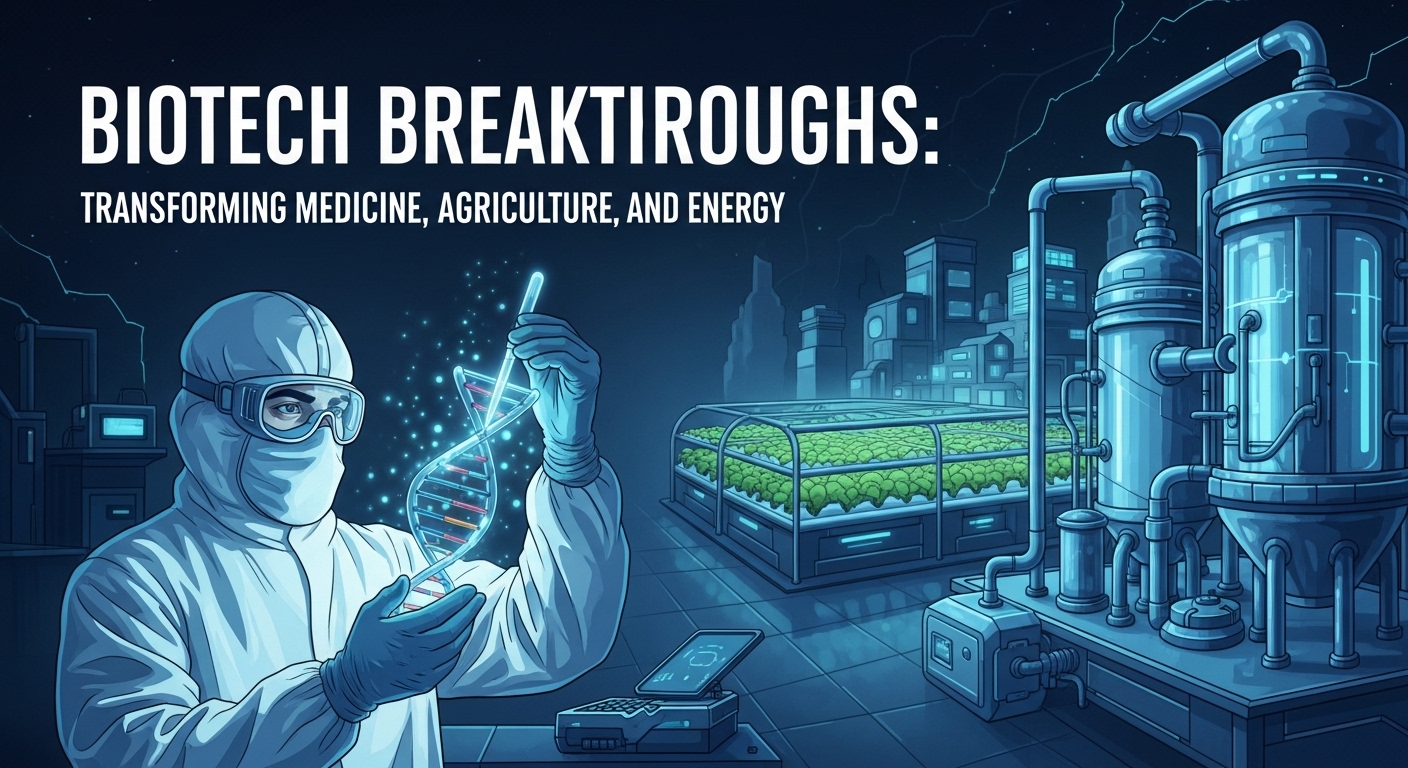Biotechnology, often shortened to “Biotech,” is one of those fields that seems to crop up everywhere these days. Medicine, agriculture, energy, you name it. I’ve been diving into this fascinating world, and it’s full of surprises. Ah, the wonders of modern science. It’s like a backstage pass to the future. You know, the kind of stuff that makes you say, “Wait, we can do that now?” Anyway, let’s wander through this topic together, shall we?
What Exactly is Biotech?
When we talk about Biotech, we’re essentially looking at the use of living systems and organisms to create or develop products. It’s like playing with the building blocks of life itself. The magic happens when scientists mix biology with technology. They innovate solutions that can sometimes sound like science fiction. But they’re very real.
Applications of Biotechnology
Biotechnology is not a one-size-fits-all thing. It’s sprawling and diverse, touching various aspects of life. Let’s break down some key areas where it’s making waves.
Biotechnology in Medicine
In the realm of medicine, Biotech is transforming how we think about treatments. From personalized medicine to CRISPR, the potential is enormous. Personalized medicine is all about creating tailor-made therapies for individual patients. No more one-drug-fits-all scenarios. This approach is revolutionizing cancer treatment, among other things.
Agricultural Biotechnology
Then there’s agriculture. With the world population constantly on the rise, ensuring food security is a real challenge. Biotech is providing solutions like genetically modified organisms (GMOs) which can withstand pests and harsh weather. You know, those crops that can grow even when nature decides to throw a tantrum. Also, it’s not just about food quantity but quality too. Enhancing nutritional content is another goal.
Environmental Impact and Energy
Biotech is also stepping into the environmental and energy sectors. Biofuels, for instance, are being developed as a renewable energy source. They have the potential to reduce our reliance on fossil fuels. Plus, bioremediation uses microbial processes to clean up contaminated environments. It’s like giving Mother Nature a helping hand to heal.
The Business Side of Biotech
Let’s not forget that Biotech is big business. Biotech companies are transforming medicine and business, not just through their products but also by driving economic growth. Venture capital is pouring into startups with promising ideas, and some of the giants are becoming household names. It’s a booming industry with lots of room for growth.
Challenges and Ethical Considerations
But, it’s not all sunshine and rainbows. Biotech poses ethical dilemmas too. Things like genetic modification bring up concerns about playing God. There are debates over the safety and morality of such practices. It’s crucial to navigate these waters carefully. Plus, regulatory challenges can slow down the progress of truly groundbreaking innovations. Balancing advancement with ethical responsibility, there’s the rub.
Biotechnology and Society
The interaction between Biotech and society is quite dynamic. It’s like a dance, and sometimes they’re not quite in step. Social perceptions can guide the direction of scientific exploration, and vice versa. Public opinion is significant, especially when it comes to areas like genetic engineering and cloning.
Public Perception and Education
Educating the public about biotechnology is vital. People need to understand what it involves, its potential benefits, and its risks. Misunderstandings can lead to resistance and fear. The objective is to build trust through transparency and engagement.
The Role of the Media
Media plays a massive part in shaping public perception. Sensational headlines can mislead or frighten people. Now, more than ever, it’s important to get the facts straight. The BBC Biotechnology section is one example of a resource that aims to provide factual information. Ensuring content is both accurate and easy to understand is key.
Legal and Regulatory Framework
Biotech also exists within a complex legal and regulatory framework. Navigating these laws is no picnic. It ensures safety and efficacy but can sometimes stifle innovation. How do we balance these needs?
| Region | Regulatory Body | Focus |
|---|---|---|
| USA | FDA | Drugs and Medical Devices |
| EU | EMA | Medicinal Products |
| Global | WHO | Health Standards |
Each region has its own set of rules, meaning global companies must navigate a labyrinth of requirements. There’s a lot of paperwork involved, and patience is more than a virtue; it’s a necessity.
The Future and Continuous Evolution
Looking ahead, the potential for biotech is limitless. It’s constantly evolving. More discoveries are on the horizon, and with them, new possibilities. We’re at the cusp of something remarkable, but getting there will take time, innovation, and collaboration.
For those wanting to delve deeper into the terms and conditions that often surround biotech innovations, especially in business contexts, check out this resource for more insight. It’s all about understanding the framework within which these innovations take place.
FAQs about Biotechnology
- What’s the difference between biotechnology and biomedical sciences?
Biotechnology involves using living organisms to develop products, while biomedical sciences focus on the biology of human health and disease.
- Are GMOs safe to eat?
- How is biotechnology affecting climate change?
- Can biotechnology cure genetic disorders?
- Is biotechnology mostly about genetic engineering?
Yes, GMOs are tested for safety, and regulatory agencies worldwide consider them safe for consumption.
Biotechnology offers solutions like biofuels and bioremediation that help reduce the carbon footprint.
Advances like gene therapy and CRISPR are paving the way for potential cures, but it’s still an evolving field.
Not at all. While genetic engineering is a part of it, biotechnology encompasses a broad range of techniques and applications.
So, yeah, biotechnology. It’s a broad field, and we’re just scratching the surface here. It’s one of those areas that, the more you learn, the more questions you have. And maybe that’s the best part—there’s always more to discover.




